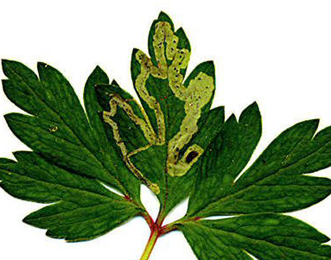|
||||||
|
Phytomyza
hendeli Hering, 1923 Phytomyza
hendeli Hering, 1923. Dt. ent. Z. 1923: 197 |
|||||||||||||||||||||||||||||||||||||||||||||||||||||||||||||||||||
Leaf-miner: Mine narrow, whitish, linear, normally adjoining margin of leaf; in small leaves can become blotch-like (Spencer, 1972b: 91 (fig. 305); Spencer, 1976: 427, 429 (fig. 746)).
Larva: The larvae of flies are leg-less maggots without a head capsule (see examples). They never have thoracic or abdominal legs. They do not have chewing mouthparts, although they do have a characteristic cephalo-pharyngeal skeleton (see examples), usually visible internally through the body wall. The larva is described by de Meijere (1926). Puparium: The puparia of flies are formed within the hardened last larval skin or puparium and as a result sheaths enclosing head appendages, wings and legs are not visible externally (see examples). Black; posterior spiracles on short conical projections, each with an irregular ellipse of 18 bulbs (Spencer, 1976: 427). Hosts in Great Britain and Ireland:
Hosts elsewhere:
Time of year - mines: June. Time of year - adults: Currently unknown. Distribution in Great Britain and Ireland: Local. Somerset (nr Frome) (Spencer, 1972b: 92); East Kent and Pembrokeshire (NBN Atlas). Also recorded at Hoad's Wood, Sedlescombe, East Sussex (British leafminers). Distribution elsewhere: Widespread in central and western Europe including Denmark, Finland, Norway, Sweden (Spencer, 1976: 427), Germany (Bladmineerders van Europa), Czech Republic, Lithuania, Poland and The Netherlands (Fauna Europaea). NBN Atlas links to known host species: British and Irish Parasitoids in Britain and elsewhere:
|
| Last updated 04-Oct-2017 Brian Pitkin | ||

